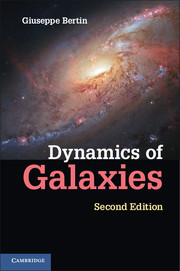Preface to the Second Edition
Published online by Cambridge University Press: 05 June 2014
Summary
Since the year of publication of the first edition of Dynamics of Galaxies, the field has developed significantly. This book keeps the structure of the first edition but includes much new material. In general terms, it contains an up-to-date view of the basic phenomenology (in the eyes of a theorist), a new discussion of the properties of dark halos in galaxies in the light of recent results and projects, an extended description of the dynamics of quasi-relaxed stellar systems in connection with the dynamics of globular clusters, an introduction to gravitational lensing, and a primer on the properties of self-gravitating accretion disks. Motivation to undertake the writing of the new edition has come not only from personal research in the above-mentioned topics but also especially from the teaching experience in graduate and undergraduate courses (in Milan and Pisa); therefore, in this new edition the set of problems has increased considerably, especially in relation to Parts I and II.
The details of additions that characterize this edition are the following. Two new chapters have been placed at the end of the book, in Part V. Chapter 26, “Galaxies and Gravitational Lensing,” provides the basic elements of the theory of gravitational lensing and a summary of some interesting astrophysical applications; an incentive to write such a chapter was given by the fact that in the last few years the combined use of stellar dynamics and gravitational lensing has proved to be an excellent diagnostic of the mass distribution in distant self-gravitating systems.
- Type
- Chapter
- Information
- Dynamics of Galaxies , pp. xiii - xivPublisher: Cambridge University PressPrint publication year: 2014



